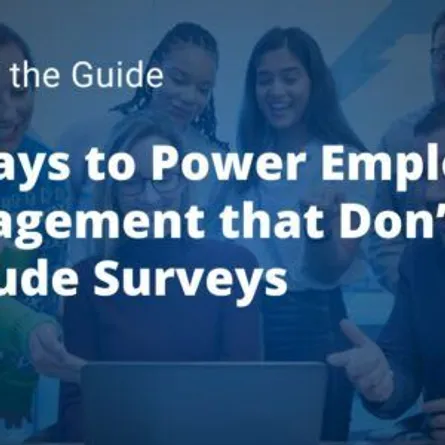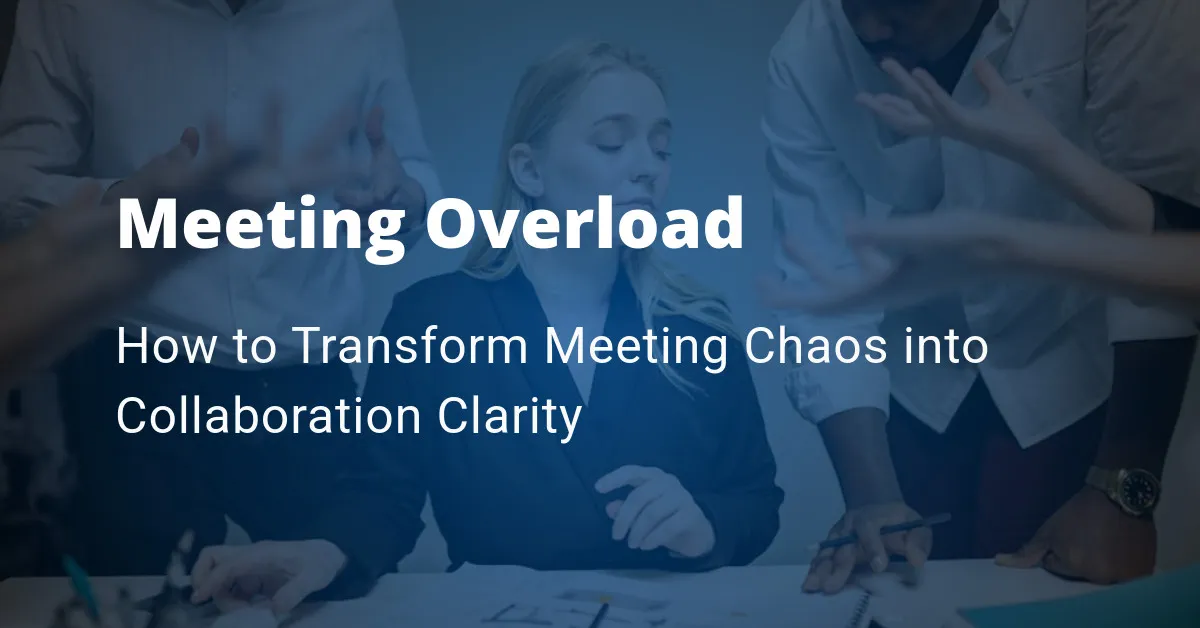
How to Transform Meeting Chaos into Collaboration Clarity
- Admin
- Collaboration
- 15 Apr, 2025
Behavioral science is transforming collaboration from chaos to clarity.
Let’s face it: most meetings suck.
They’re long, repetitive, unclear, and worst of all—ineffective. According to a study by Harvard Business Review, 71% of senior managers say meetings are unproductive and inefficient. But here’s the twist: meetings aren’t the real problem. Maybe it’s people.
Hear us out! More specifically, how people interact, communicate, and make decisions—often without understanding the personalities and work styles of the people in the (virtual) room. That’s where behavioral science steps in and starts to flip the script.
We’re not talking about soft “team-building” stuff. We’re talking about hard behavioral data baked into your meeting tools, real-time personality insights, and AI-powered platforms that help teams collaborate with intention—not confusion.
Let’s break it down.
Meetings Aren’t Going Away. But the Pain Can.
The average employee attends 62 meetings a month. That’s more than two per workday. Yet only 50% of meeting time is seen as effective. In fact, according to a Korn Ferry study, more than two-thirds (67 percent) of workers say that spending too much time in meetings and on calls distracts them from making an impact at work., while 34% say they waste between 2-5 hours per week on calls or meetings that don’t accomplish anything.
Still, 35 percent say that they’d go to a meeting even if they knew it wasn’t going to be productive, instead of declining the meeting. The cost? Lost productivity, wasted salaries, and exhausted teams.
But here’s what’s changing: behavioral science and workplace psychometrics are now being applied not just to hiring—but to everyday collaboration.
That means:
- Predictive insights into how team members make decisions
- Personality overlays right inside your calendar and collaboration tools
- AI-driven recommendations for how to communicate with others based on their traits
It’s not a meeting makeover. It’s a collaboration revolution.
What’s Driving the Change?
The convergence of behavioral analytics and workplace technology.
Platforms like Humantelligence are embedding psychometric data where people actually work—inside Microsoft Teams, Zoom, Slack, and calendar invites. That means team members don’t need to “go find” each other’s personality profiles. It’s right there, contextualized for the task at hand.
No more guessing if someone is detail-oriented or big-picture. No more misreading silence as disengagement. No more talking in circles.
The tools surface what matters in the moment: how someone prefers to give and receive information, how they process feedback, how they approach problem-solving. And then it suggests how you should interact with them to get things done faster and with less friction.
From Chaos to Clarity: How It Works
Imagine you’re scheduling a cross-functional project meeting.
Your calendar tool shows you behavioral summaries for everyone invited. You see that Maria is highly analytical and task-focused, while Jared is more relational and expressive. That information doesn’t sit in a dusty HR file—it pops up directly in the invite and offers smart tips for framing your agenda and communicating in a way that resonates with both.
Then, inside the meeting, your video platform nudges you in real time:
- “Speak in bullet points for Maria”
- “Check in personally with Jamal before diving into details”
- “Expect Taylor to need more time to process before weighing in”
This is behavioral intelligence at work. It’s not about changing who you are—it’s about adapting how you show up to drive better outcomes.
And it works.
The Results Are In
Companies using behavioral science in daily workflows see major gains in collaboration. According to our customer data:
- 32% fewer misunderstandings in remote meetings
- 28% reduction in meeting time due to more focused communication
- 40% improvement in meeting follow-through and accountability
- 35% faster decision-making on cross-functional teams
Why? Because when people understand each other, they collaborate more efficiently. It’s that simple.
And this isn’t just internal optimization—it impacts the bottom line. Teams that communicate effectively are 25% more productive (McKinsey), and highly aligned companies grow revenue 58% faster (Forbes).
From Personalization to Performance
This shift toward embedded personality insights is part of a broader movement: personalization at scale.
Netflix personalizes your movie list. Spotify curates your playlists. Behavioral science now personalizes how you collaborate at work—tailoring how meetings are run, who speaks when, and how decisions get made.
It’s not about labeling people. It’s about unlocking their best work by acknowledging who they are and how they operate.
With tools like Humantelligence, organizations can:
- Build high-performing teams based on culture fit and behavioral diversity
- Coach managers on how to run meetings that respect different work styles
- Replace guesswork with data-driven collaboration strategies
This isn’t just “nice to have.” It’s the future of work. And it’s already here.
What This Means for Leaders
Leaders can no longer afford to wing it. In today’s hybrid, fast-paced, culturally diverse environments, emotional intelligence isn’t enough—you need behavioral intelligence.
If you’re still running meetings based on gut feel or outdated agendas, you’re not just wasting time—you’re leaving value on the table.
Here’s how modern leaders are making meetings matter:
✅ They know their teams’ communication styles before stepping into a meeting
✅ They use behavioral insights to assign roles, manage time, and facilitate dialogue
✅ They create inclusive environments where every style has a voice
✅ They make data-informed decisions that move things forward
This isn’t micromanagement—it’s micro-adaptation. And it changes everything.
Meetings aren’t inherently broken. They’re just misaligned with how people think and work. Behavioral science is the missing link—giving teams the clarity, context, and tools to turn meetings from chaotic to productive.
No more one-size-fits-all agendas. No more disengaged Zoom calls. No more death-by-update.
Instead, imagine a culture where people feel seen, heard, and understood—where meetings are strategic, fast, and energizing. That’s what’s possible when behavioral data powers the way we collaborate.
Humantelligence is leading this charge—embedding behavioral insights directly into the tools your teams already use. Because better collaboration shouldn’t be a wish list item. It should be a default setting.
Final Thought: It’s About Making Your Meetings Better
We’ll say it again: meetings aren’t going away. But they can get a whole lot better.
When behavioral science is built into your daily workflow, meetings become less about endurance—and more about impact.
So the next time you’re dreading that team sync or quarterly planning session, ask yourself:
Do we actually understand each other? Are we collaborating with clarity—or just colliding with personalities? Are we using tools that help us work smarter—or just schedule faster?
If the answers are no, it’s time for a change. Because better collaboration starts before the meeting even begins.
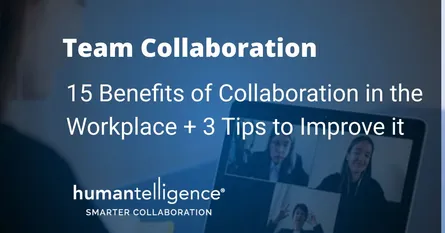
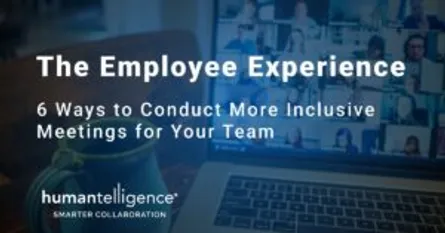
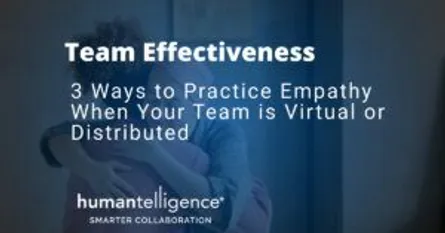
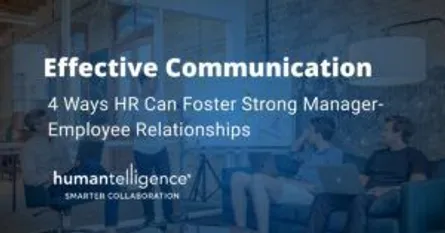

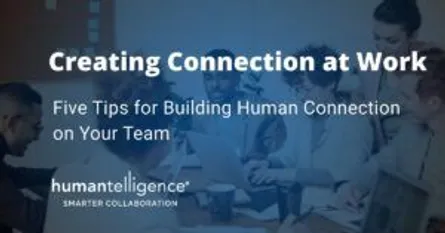
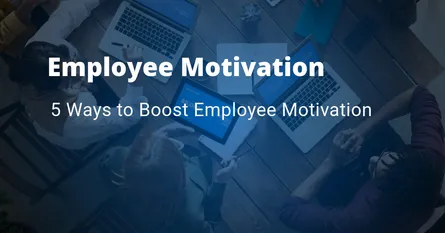
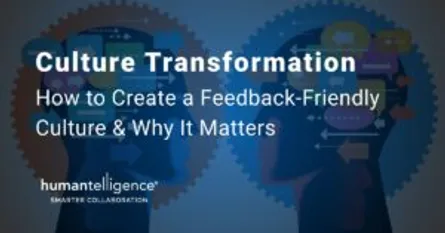

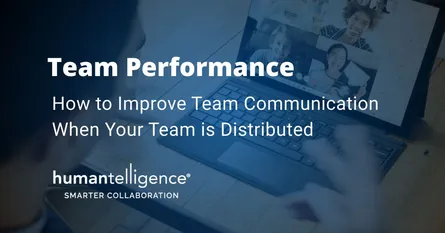
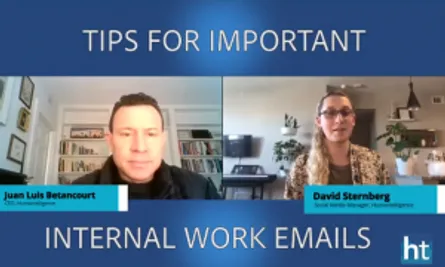
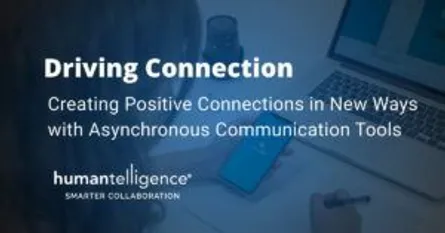
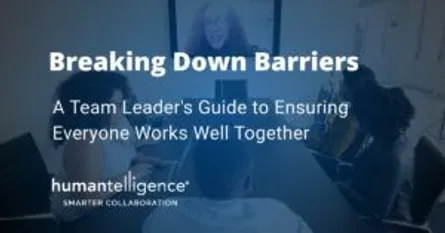

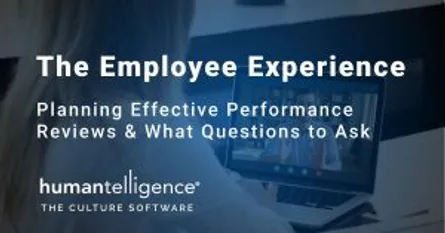
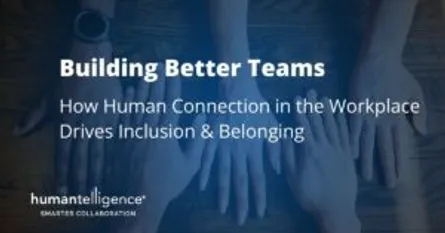
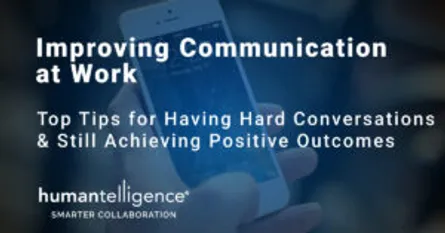
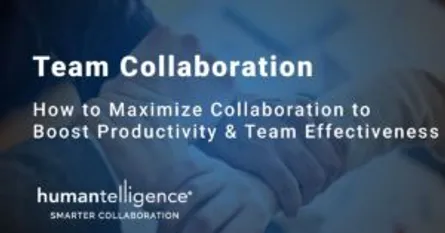
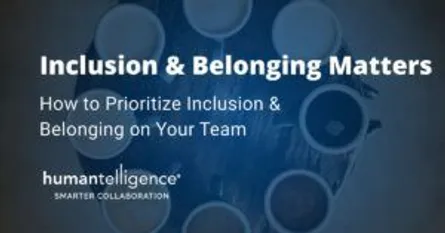

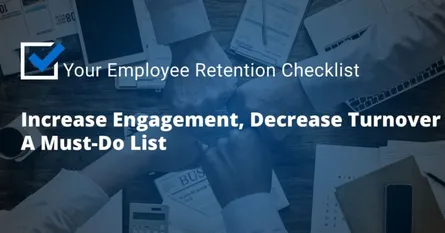
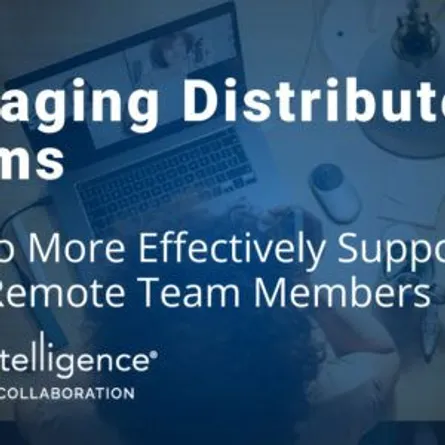
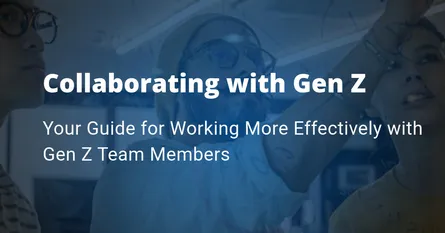
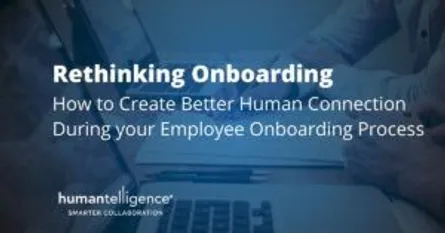

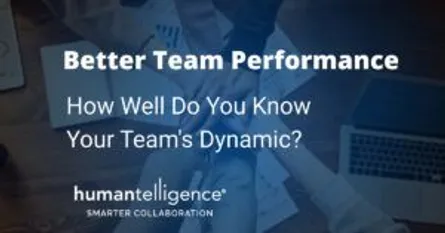
-Low-Quality.DNBpXyLx_1VXSiM.webp)
.CiqwvMOO_A63sY.webp)
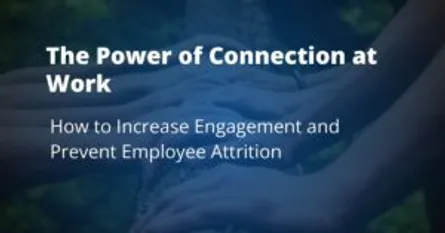
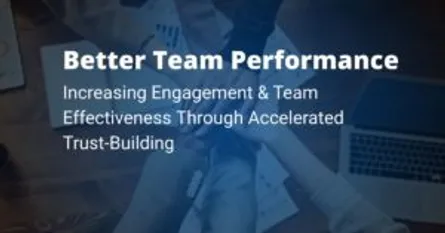
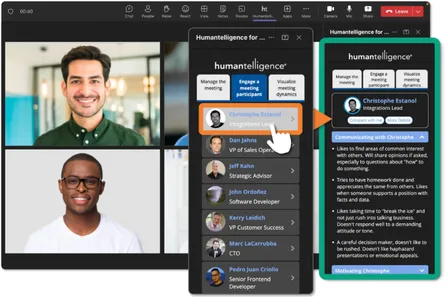
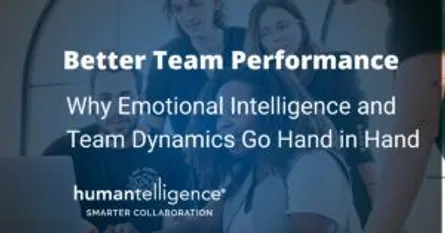
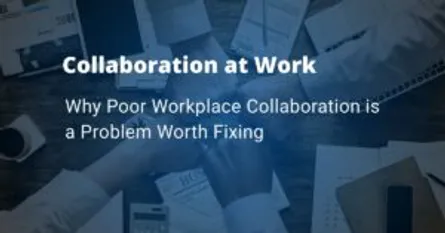
-Medium-Quality.ZFp5mEuF_Z13ebXJ.webp)
